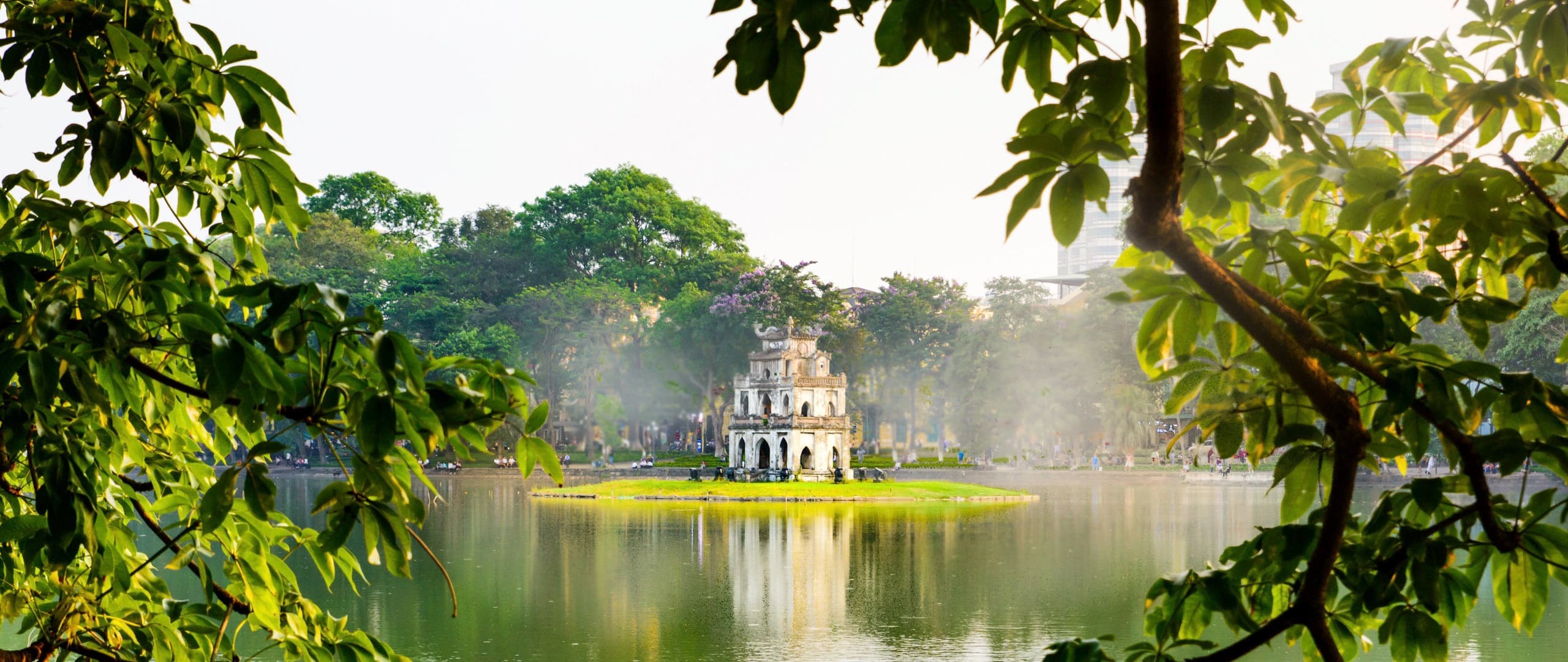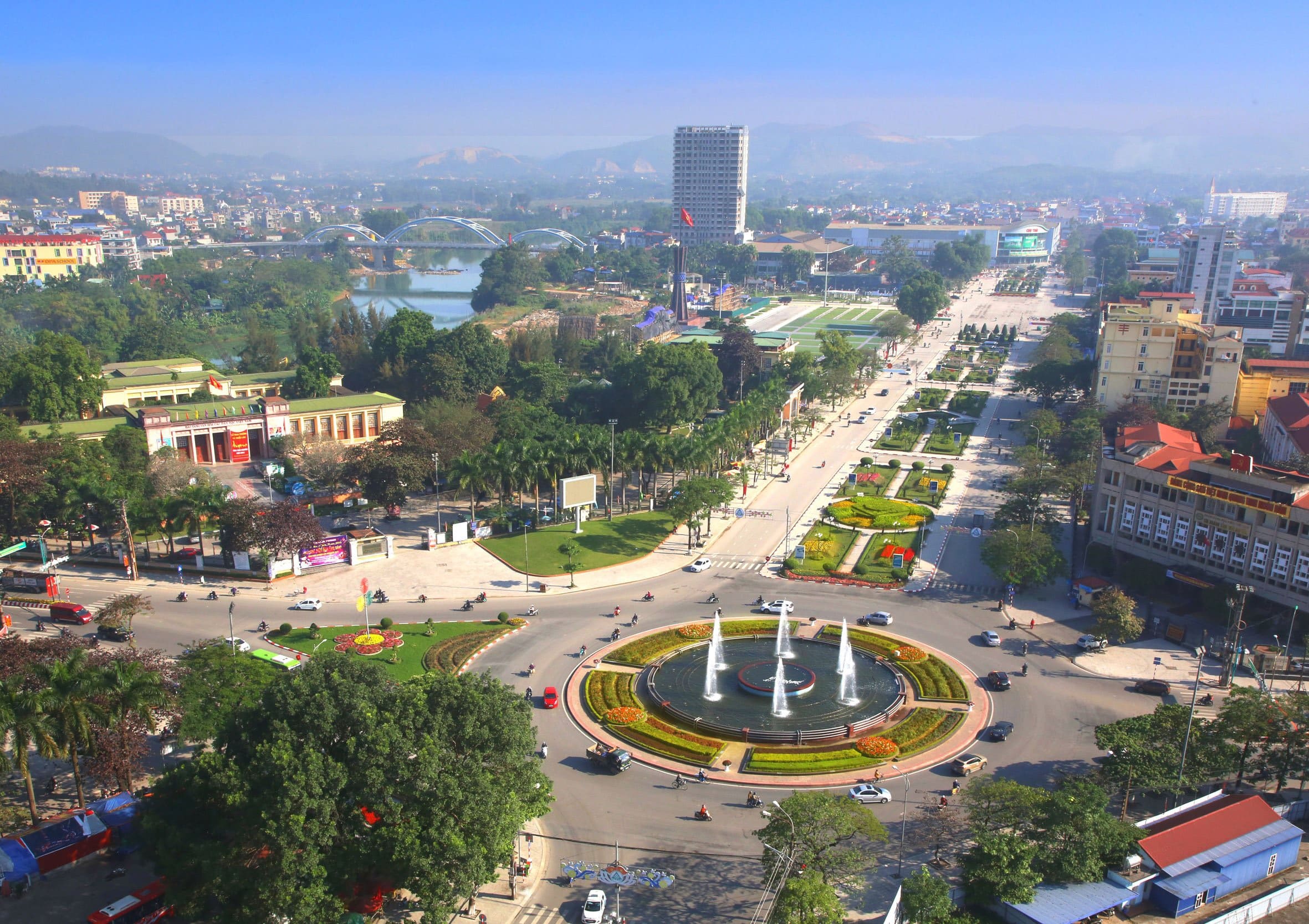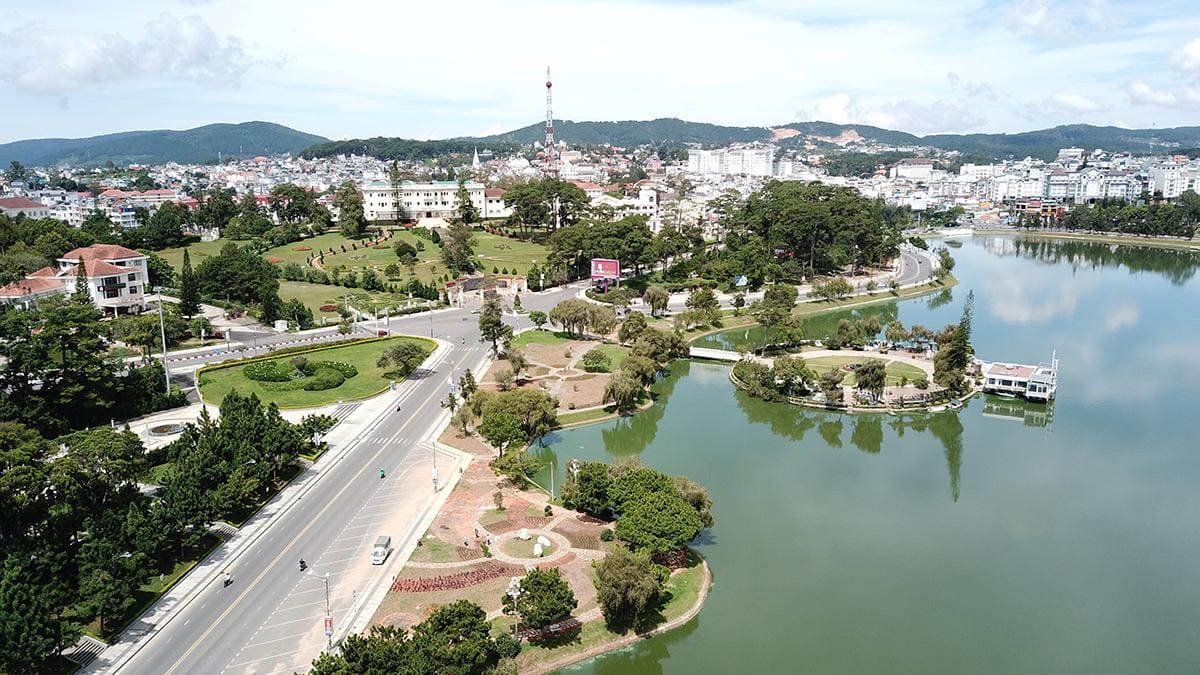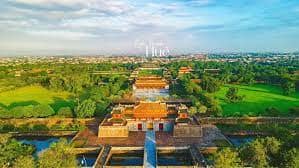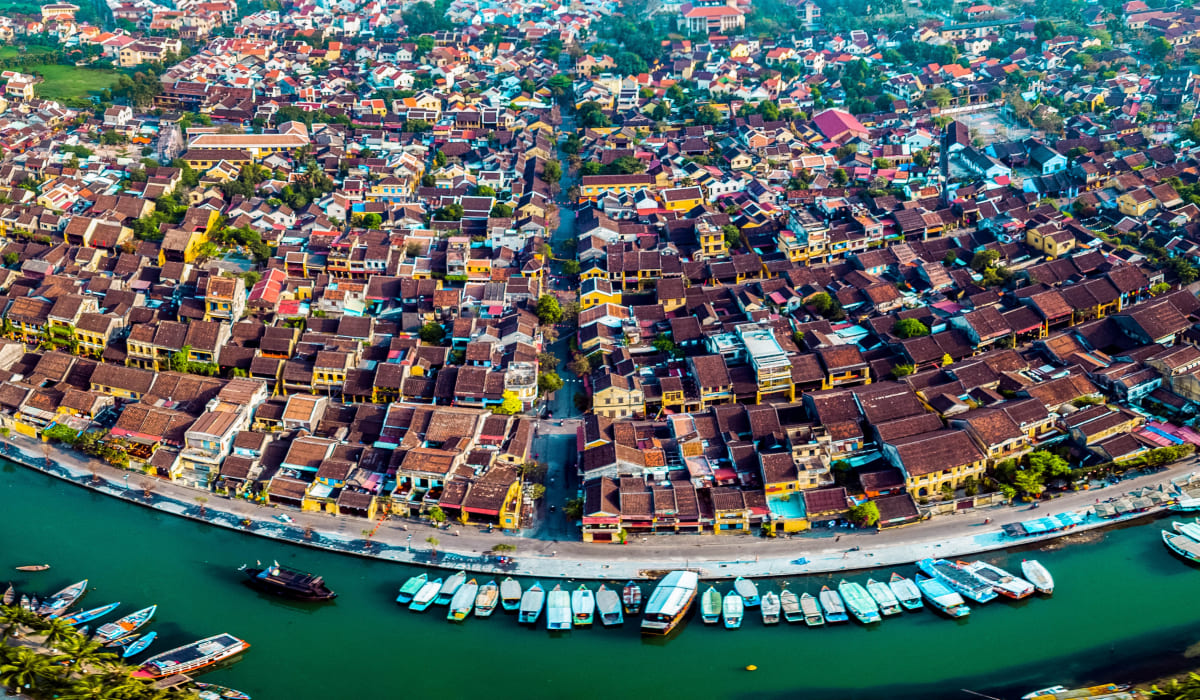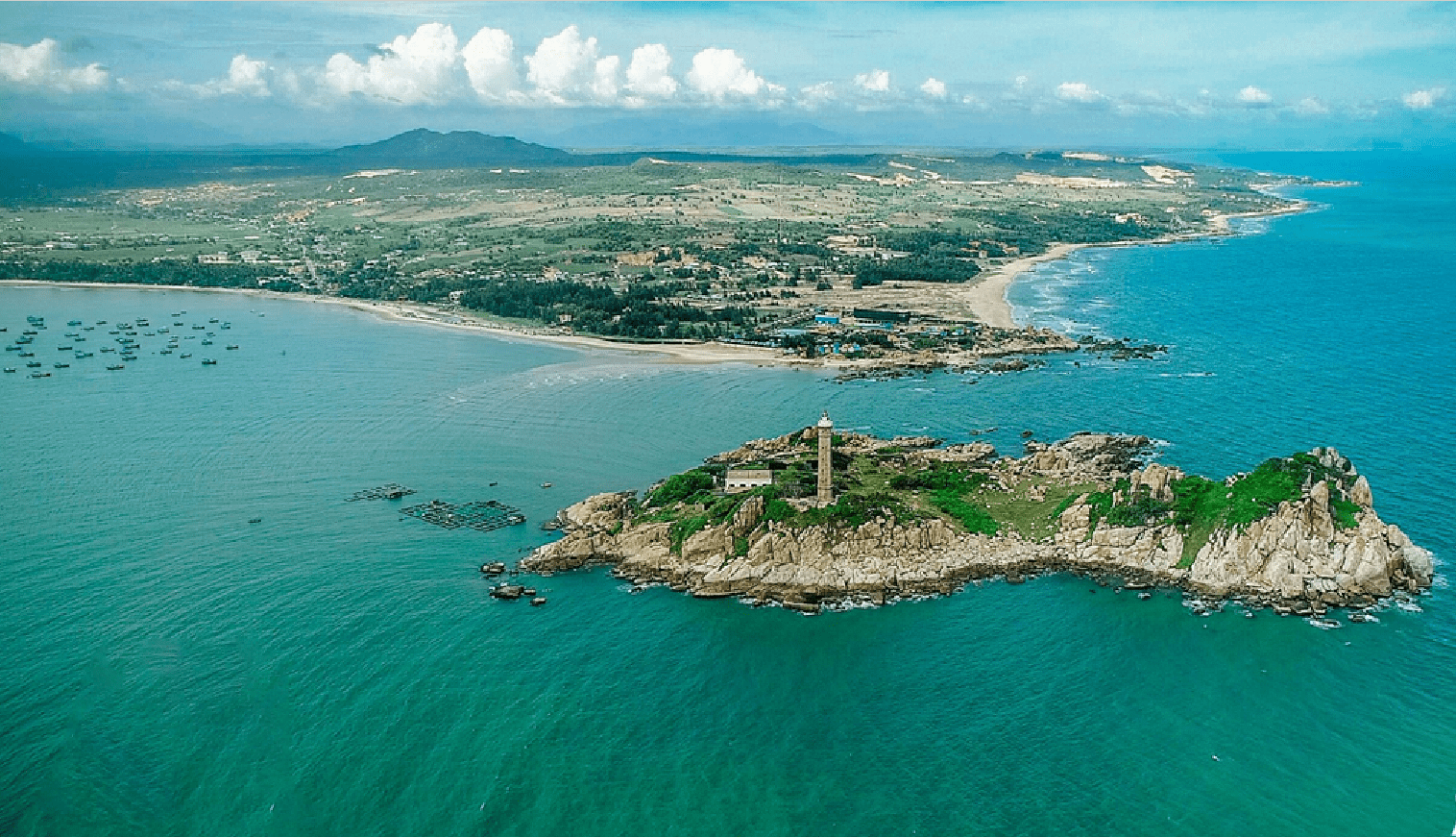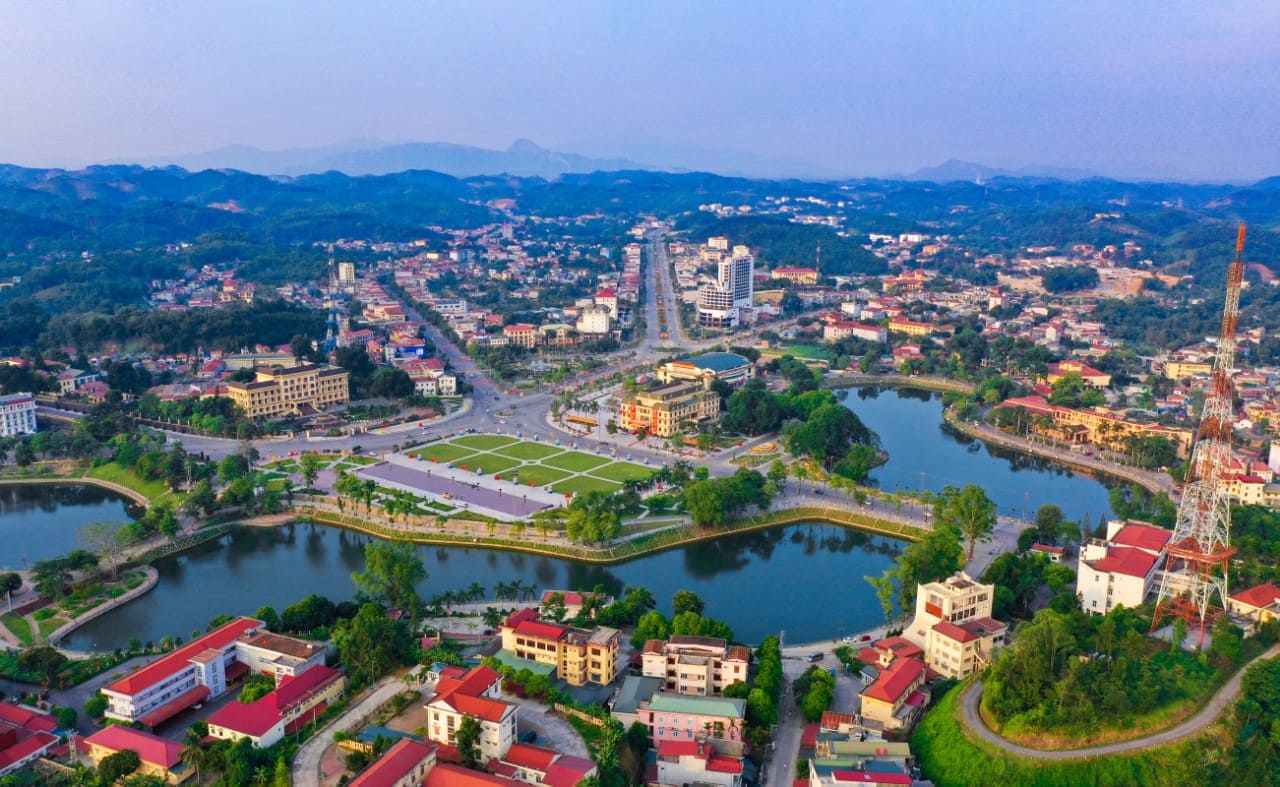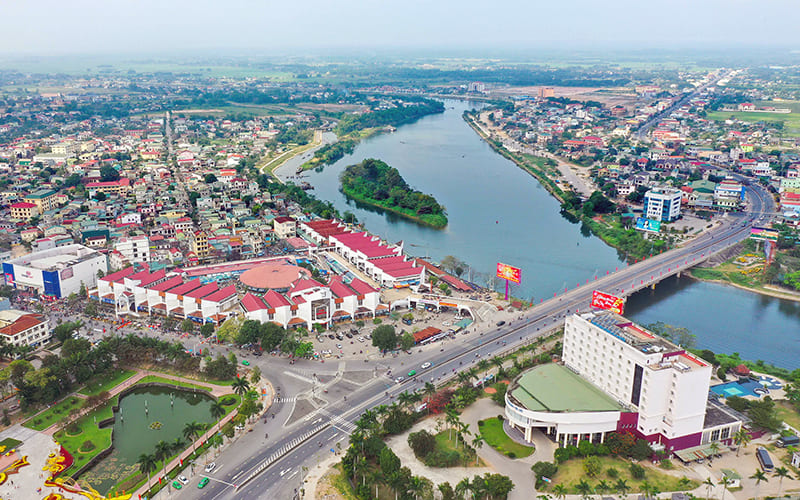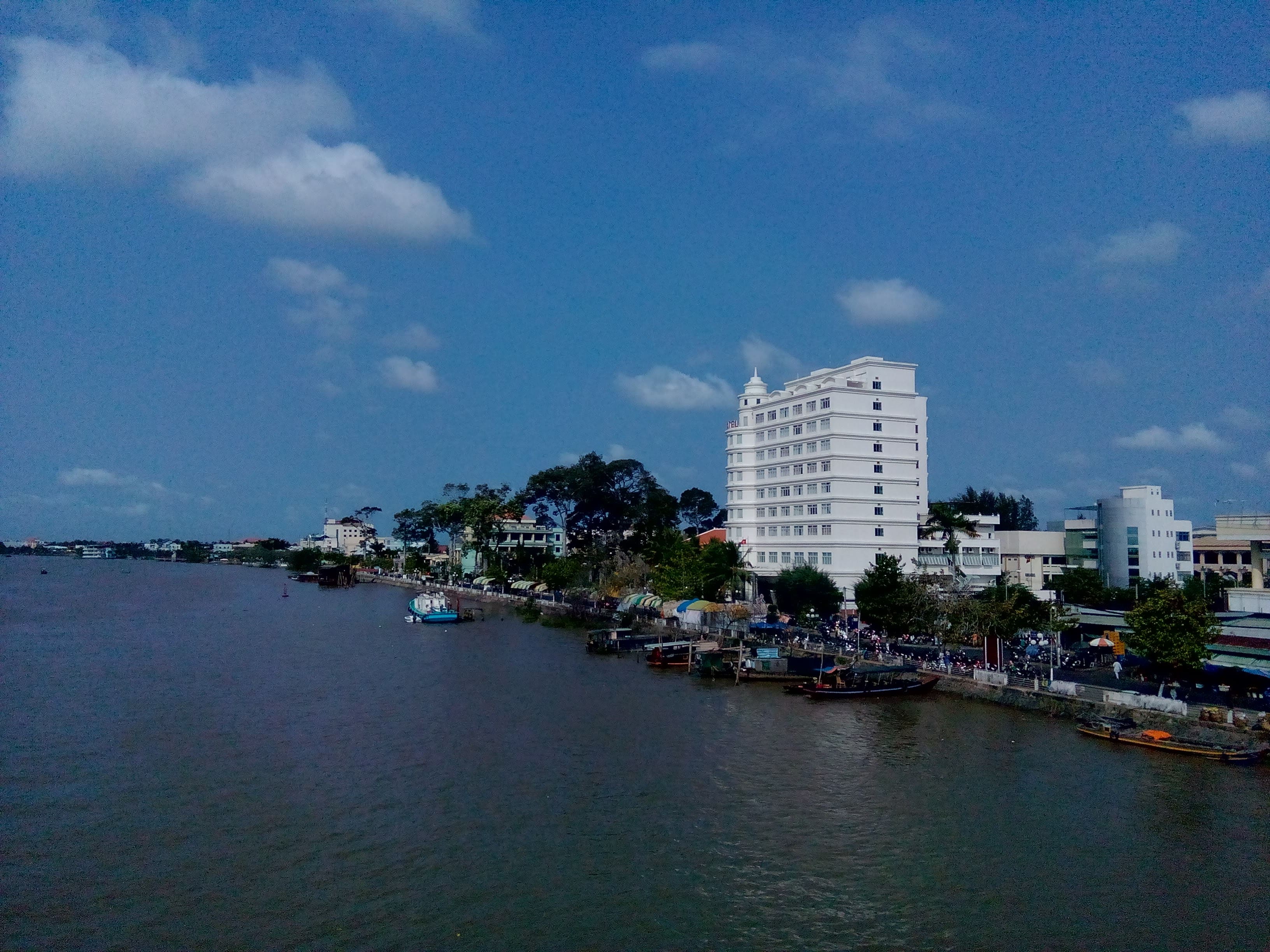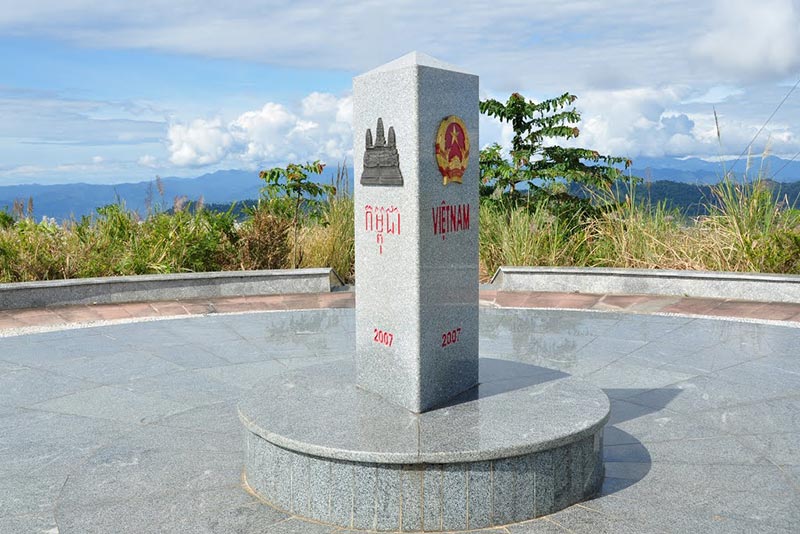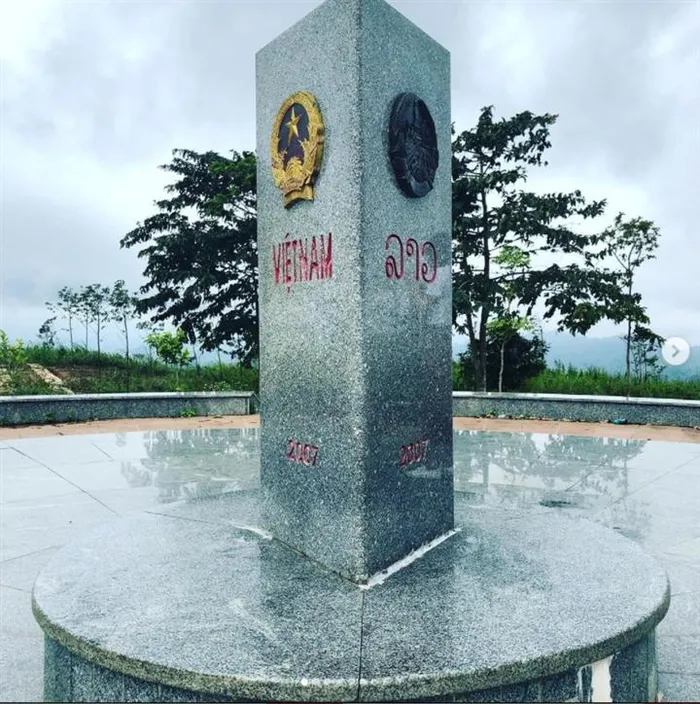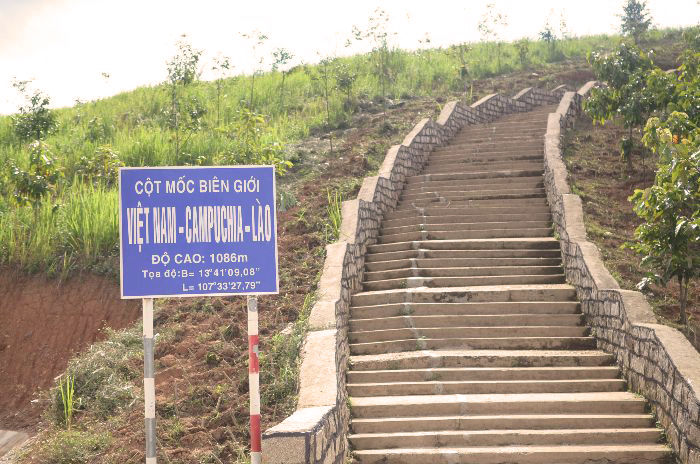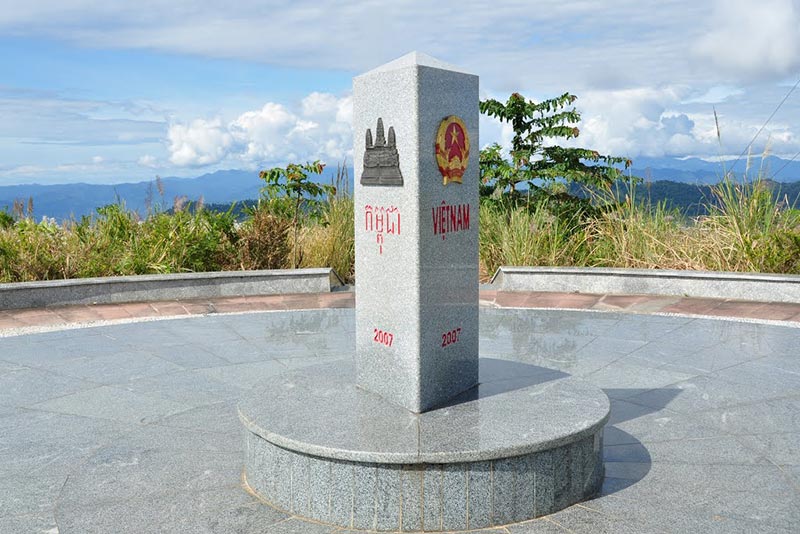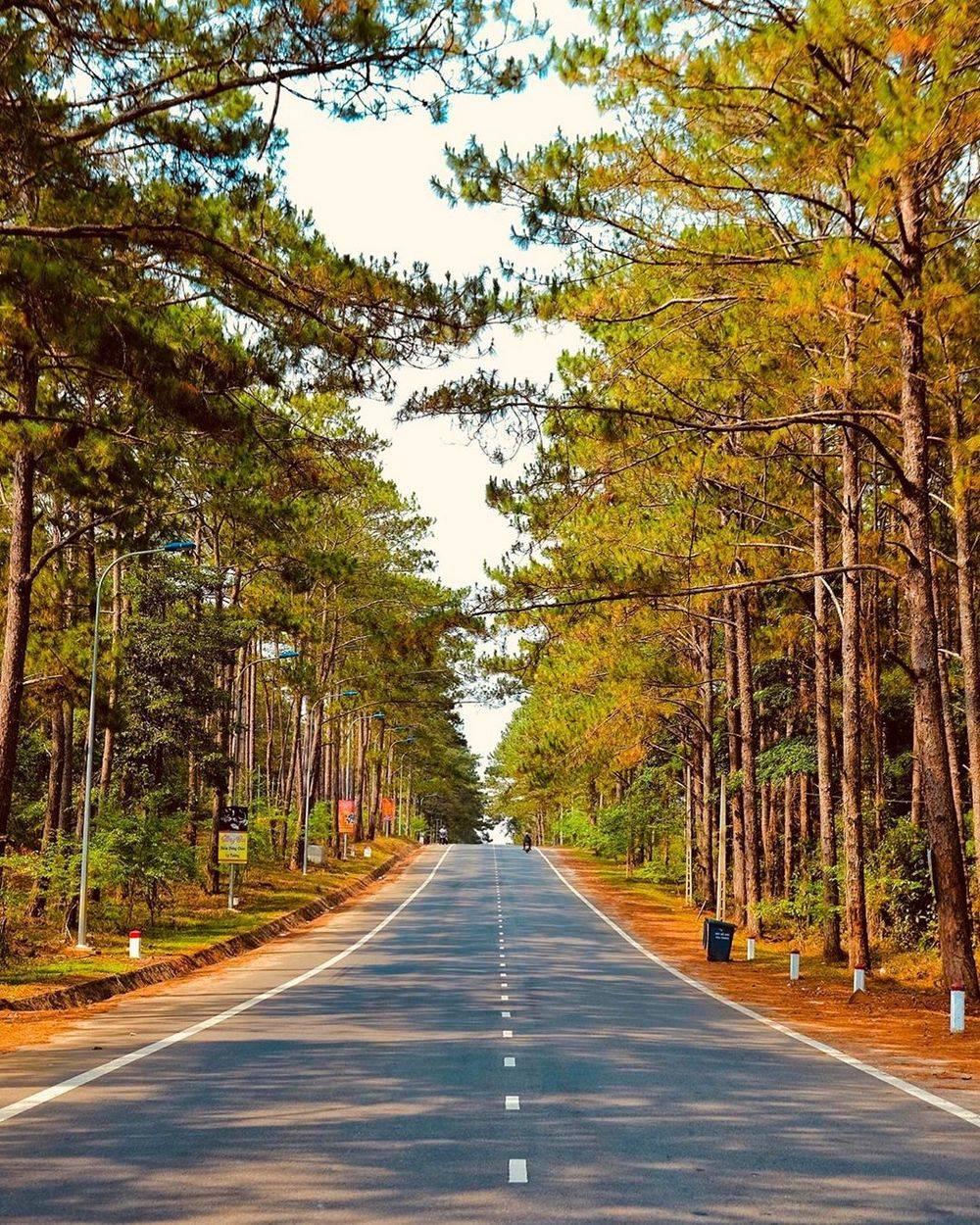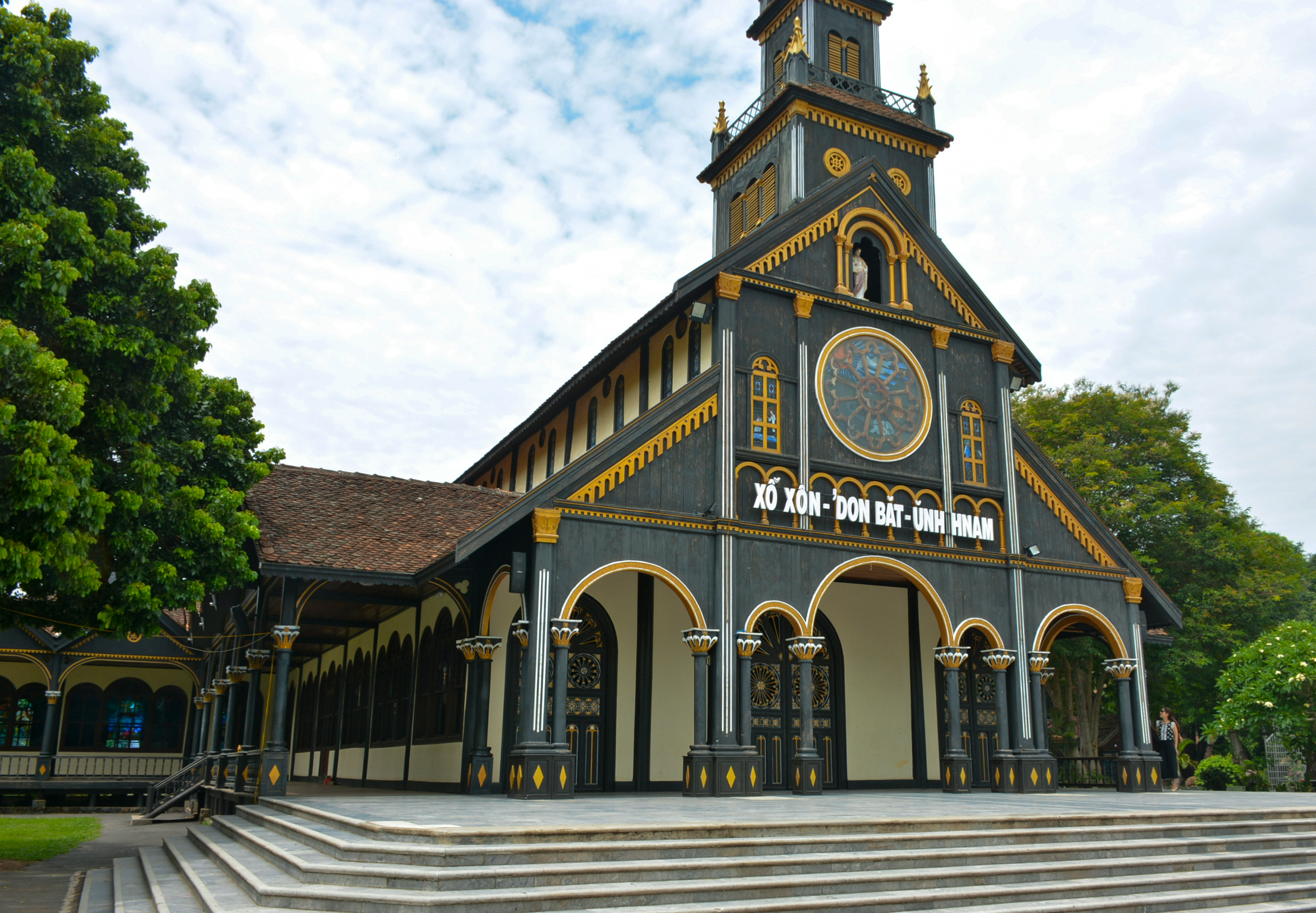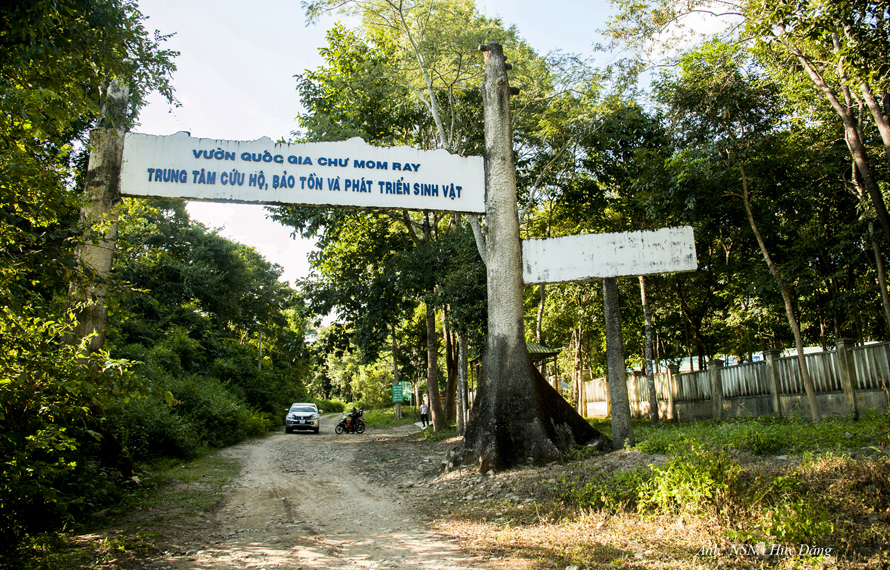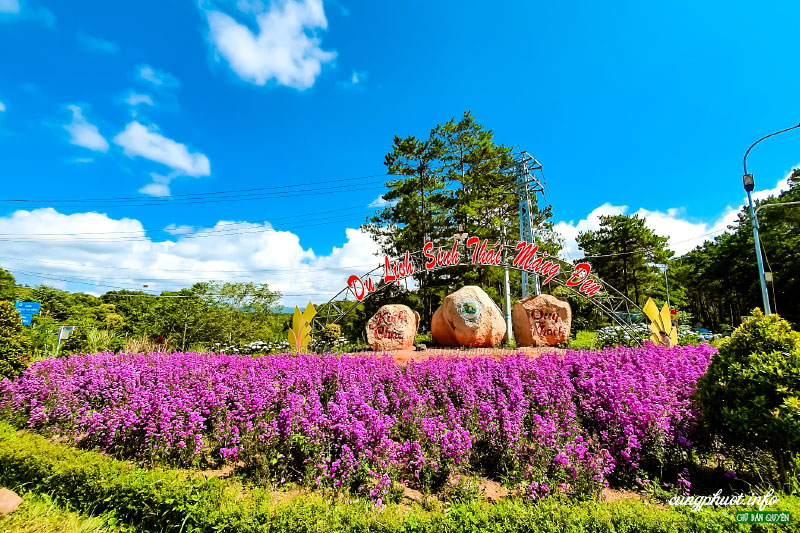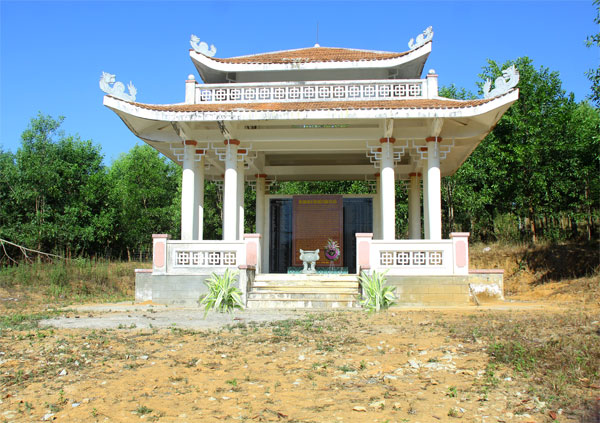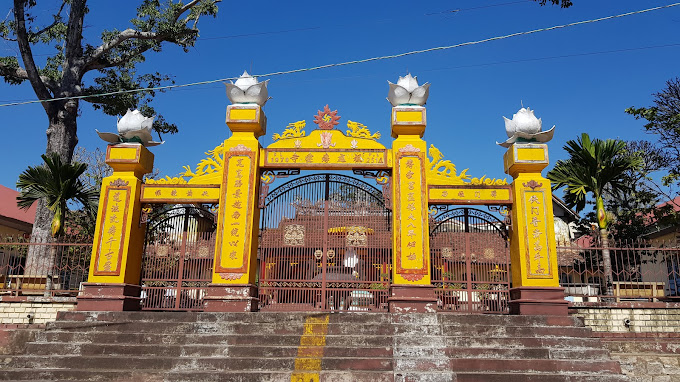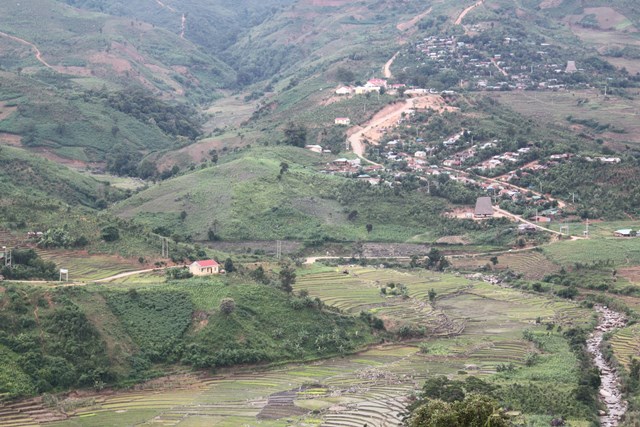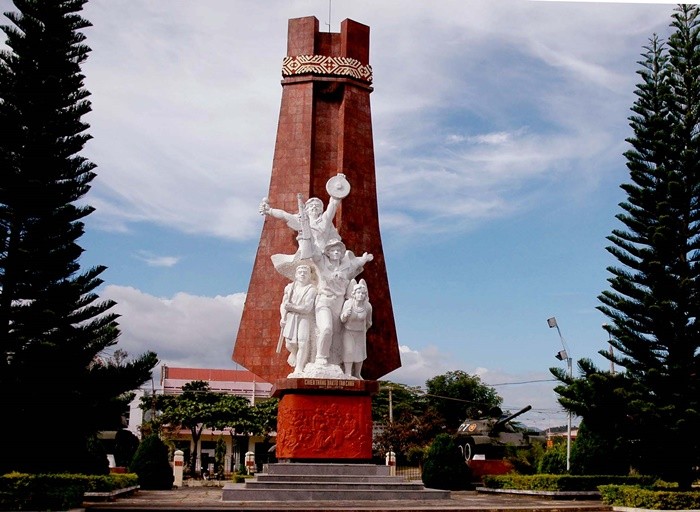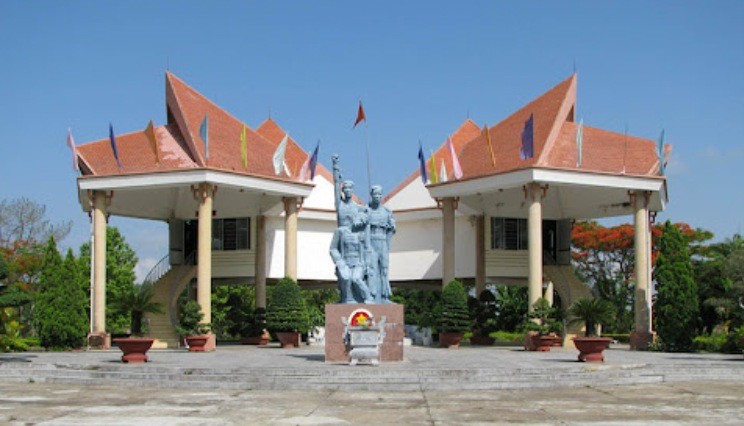The revolutionary historical relic area of Kon Tum Provincial Party Committee Base is located in the Northeast of Mang Ri commune, Tu Mo Rong district, Kon Tum province. It is one of the bases with a very important position and strategic role in the resistance war against the US to save the country of Kon Tum Province in particular and the Central Highlands in general.
The base was built, consolidated and developed in a very favorable area. located in the revolutionary heart of the Xo Dang ethnic population. This place has a very complicated divided terrain, with a continuous system of hills and mountains located in the Ngoc Linh mountain complex, with high mountains and extremely dangerous deep streams, making it very difficult for the enemy to detect. attack us. But on the contrary, this is a very convenient area for us in terms of communication system, located at the northern tip of the Central Highlands, the gateway connecting to the Socialist North, where our bases and basic areas are adjacent. from all directions in the province. On that basis, it creates favorable conditions for us in the process of moving as well as in the process of attacking or retreating to defend. Because of such favorable conditions, the Provincial Party Committee stood up to operate and direct the struggle during the period from 1960 to 1972.
In early 1955, the Kon Tum Provincial Personnel Committee moved to Kon Po Oai and Kon Po E (Po E commune), then moved to Dak So Lo and then moved back to Nuoc Che (now in Ngoc Tem commune, Kon Plong district), stabilize the organization and direction, and urgently promote the shift in ideology and organization to suit the new situation.
At the end of 1959, the Kon Tum Provincial Party Committee moved its agency to H80 (now Tu Mo Rong district) located in Mo Gia village, Mang Ri commune to promptly direct the struggle movement in the coming period.
Because the terrain H29 (Kon Plong) is remote, the direction is difficult and timely. So the Kon Tum Provincial People's Committee chose the location at Dak Y Hai stream in Mang Ri commune as a base, because this is a strategic military as well as political area, behind the mountain range. Majestic Ngoc Linh Mountain with an altitude of 2598m is located to the north, to the east is the base of the Party Committee of Zone 5. This area creates a convenient traffic corridor for routes from east to west.
In addition, this is also a strategic area for agricultural economic development of wet rice cultivation along two streams Dak My (H30) and Dak Posy (H80). There is also a fairly flat valley with good soil. Providing food sources for the Provincial Party Committee's long-term operations. Moreover, the people here are very good, over 70 villages are of the Xo Dang ethnic group, our revolutionary base where no puppets come.
To stabilize long-term operations and direction, at the beginning, the Provincial Party Committee built working departments with rudimentary materials such as bamboo, wood... with large areas. The area of each room is 25m to 30m square. In addition, to ensure safety and prevent bombs and bullets when the enemy detects them, the Civil Affairs Committee also equips a system of trenches and shelters surrounding the working area of the Secretary and Deputy Secretary of the Office. Provincial Party Committee room, logistics, cipher department... And are arranged quite methodically in a closed, continuous system stretching from north to south along the hillside at an altitude of 1922.6m located in the heart of two streams. Dak Y Hai stream is large and Dak Y Hai stream is small.
Here, the Provincial Party Committee successfully directed 4 Provincial Party Congresses (from the 1st Congress, March 9, 1960 to the 4th Congress, October 26, 1971), setting out important decisions, Directing the army and people of all ethnic groups in Kon Tum province to fight against the Americans and save the country, such as: Deciding on an order to start a march to gain control over the countryside; General offensive and uprising during the Tet Offensive (1968); Dak To - Tan Canh Campaign, moving towards liberating Kon Tum province...
In addition, the Provincial Party Committee has mobilized the strength of ethnic groups and people from all walks of life, mobilized the masses, and well implemented core contents with people as the basis. On that basis, during the struggle against the US, people of ethnic groups in the base areas such as Ngoc Lay, Te Xang, Mang Ri... actively participated in all activities. Among them, especially the people of Mang Ri commune contributed 4,000 working days, participating in the fire line, carrying rice and ammunition. People's cadres and armed forces of the commune's militia and guerrillas directly participated in 17 large and small battles, destroying and disintegrating two American and puppet battalions, and destroying many enemy war vehicles. Transported and protected hundreds of officers from above to return safely, received and nurtured many key units of the Province and military zones during the gathering in the commune. Sharpened 5 million spikes and arranged hundreds of spike holes, made homemade weapons to fight the enemy, contributed to the revolution each year 600 baskets of rice, 5,000 wheat stalks, hundreds of buffaloes, cows, pigs, chickens and tons of other food…
The Provincial Party Committee Base relic will forever be a red address, a symbol of the revolutionary loyalty of the army and people of Kon Tum province. With that historical significance, the Kon Tum Provincial Party Committee Base Relic (period 1960-1972) in Mang Ri commune, Tu Mo Rong district was ranked a provincial historical relic by the Kon Tum Provincial People's Committee on August 2, 2019. 2007.
Source: Kon Tum province electronic information portal
Kon Tum
1959
view


 vn
vn en
en ja
ja ko
ko zh
zh


















